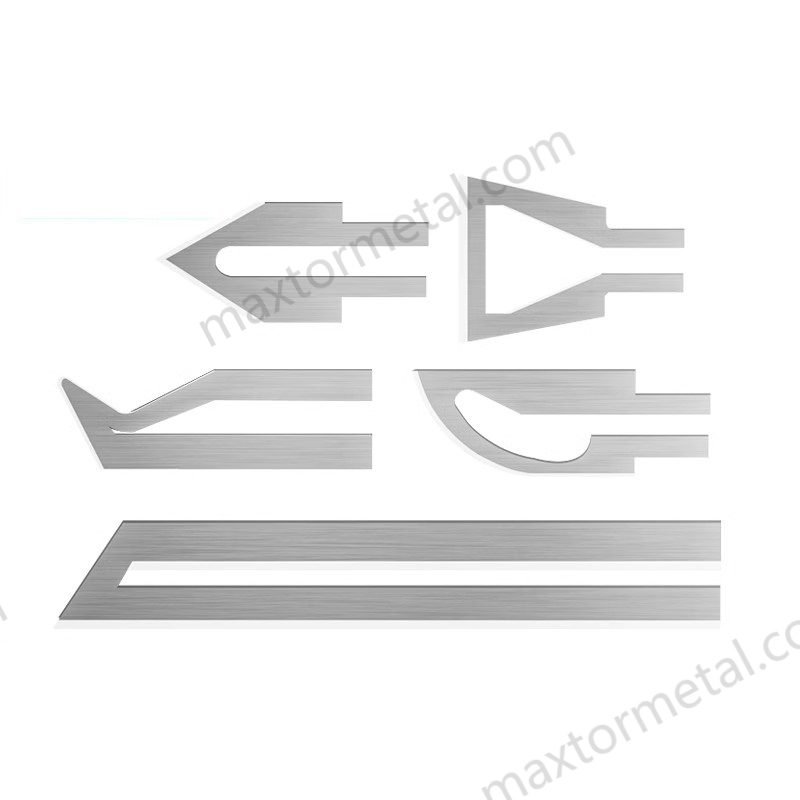
- Lưỡi dao cắt nhiệt sử dụng nhiệt để cắt và hàn kín vật liệu.
- Họ làm việc trên các vật liệu tổng hợp theo một chuyển động mượt mà.
- Những lưỡi dao này tạo ra các cạnh sạch sẽ và không bị sờn hoặc bung ra.
- Nhiệt làm tan chảy vật liệu, tạo ra những đường cắt chắc chắn và chính xác.
- Nhiều ngành công nghiệp như dệt may, đóng gói và xây dựng sử dụng chúng.
- Chúng hữu ích cho nhiều nhiệm vụ khác nhau vì chúng giúp tiết kiệm thời gian.
- Nam Kinh Metal sản xuất lưỡi dao tùy chỉnh cho các dự án đặc biệt nếu cần.
- Bạn có thể Liên Hệ nhóm của họ để được trợ giúp hoặc biết thêm chi tiết.
Lưỡi dao Thermocutter là gì?
Định nghĩa và tên gọi khác
Lưỡi dao cắt nhiệt là dụng cụ sử dụng nhiệt để cắt và hàn kín. Chúng còn được gọi là lưỡi dao nóng hoặc dao cắt nhiệt. Những lưỡi dao này cắt vật liệu và hàn kín các cạnh cùng một lúc. Điều này giúp ngăn ngừa sờn và mang lại bề mặt hoàn thiện gọn gàng, sạch sẽ. Có nhiều loại lưỡi dao cắt nhiệt khác nhau cho các mục đích khác nhau. Loại nhẹ phù hợp cho nghề thủ công, trong khi loại nặng phù hợp cho các công việc khó khăn. Ví dụ: AZTC-20 rất tốt cho bọt và nhựa mỏngZETZ-24 hoạt động tốt trong việc cắt tấm pin mặt trời và cắt cao su.
Các tính năng và đặc điểm chính
Lưỡi dao Thermocutter sở hữu những đặc điểm độc đáo riêng biệt. Chúng sử dụng lưỡi dao điện làm nóng chảy vật liệu thay vì xé rách. Điều này tạo ra các cạnh nhẵn mịn, bền lâu hơn và đẹp mắt hơn. Lưỡi dao có nhiều hình dạng khác nhau, từ thẳng, cong đến hình dạng đặc biệt, phù hợp cho nhiều mục đích sử dụng khác nhau. Lưỡi dao chất lượng cao được làm từ kim loại cứng như thép không gỉ. Chúng có thể chịu được nhiệt độ cao và hoạt động tốt trong thời gian dài. Cho dù bạn cần những đường cắt chi tiết hay lưỡi dao chắc chắn cho các dự án lớn, lưỡi dao Thermocutter đều đáng tin cậy.
Vật liệu phù hợp cho lưỡi dao cắt nhiệt
Lưỡi dao Thermocutter hoạt động tốt nhất trên vật liệu tổng hợp. Bạn có thể sử dụng chúng trên xốp, nhựa, vải tổng hợp và sợi quang. Nhiệt làm tan chảy các vật liệu này dễ dàng, rất lý tưởng để cắt. Lưỡi dao nhẹ như AZTC-20 hoàn hảo để chế tạo xốp hoặc nhựa mỏng. Lưỡi dao hạng nặng như ZETZ-24 phù hợp hơn cho các công việc công nghiệp. Chúng có thể tạo rãnh cao su hoặc cắt vải tổng hợp dày. Việc chọn đúng lưỡi dao và vật liệu sẽ giúp bạn luôn có được kết quả sạch sẽ, chuyên nghiệp.
Lưỡi dao Thermocutter hoạt động như thế nào
Quá trình gia nhiệt
Các bộ phận làm nóng bằng điện
Lưỡi dao Thermocutter sử dụng nhiệt điện để cắt và hàn kín. Nhiệt truyền thẳng đến lưỡi dao, làm lưỡi dao nóng nhanh. Nhiệt này làm nóng chảy vật liệu tổng hợp, cho đường cắt mịn và chính xác. Không giống như dao cắt thông thường, lưỡi dao Thermocutter ngăn ngừa tình trạng sờn cạnh bằng cách hàn kín chúng. Điều này giúp chúng tạo ra những đường cắt chắc chắn và gọn gàng.
Tính năng kiểm soát nhiệt độ
Bạn có thể thay đổi mức nhiệt trên lưỡi dao cắt nhiệt. Điều này giúp điều chỉnh nhiệt độ phù hợp với vật liệu bạn đang cắt. Xốp cần ít nhiệt hơn, trong khi nhựa dày hoặc cao su cần nhiều nhiệt hơn. Lưỡi dao nóng lên nhanh chóng, đạt đến lên đến 1050 độCác tính năng an toàn giúp ngăn ngừa quá nhiệt, đảm bảo an toàn khi sử dụng dụng cụ. Dưới đây là bảng các tính năng chính:
| Tính năng | Nó làm gì |
|---|---|
| Phạm vi nhiệt độ | Làm nóng nhanh từ 0 – 1050 độ |
| Điều chỉnh công suất | Cho phép bạn điều chỉnh nhiệt độ để kiểm soát tốt hơn |
| Tốc độ gia nhiệt | Làm nóng nhanh với chế độ an toàn chống quá nhiệt |
| Khả năng tương thích của lưỡi dao | Hoạt động với lưỡi dao tiêu chuẩn và lớn |
| Cân nặng | Nhẹ, dưới 12 ounce, dễ cầm |
Kỹ thuật cắt
Nấu chảy so với cắt
Lưỡi dao này làm tan chảy vật liệu tổng hợp thay vì cắt chúng. Quá trình tan chảy tạo ra các cạnh sắc nét mà không bị rách hay sờn. Điều này mang lại cho sản phẩm của bạn vẻ ngoài mịn màng và bền lâu hơn. Ví dụ, các cạnh dây thừng được nung chảy không bị bung ra, giữ được độ bền theo thời gian.
Quy trình niêm phong cạnh
Trong khi cắt, lưỡi dao đồng thời khép kín các cạnh. Các cạnh được khép kín chắc chắn hơn và không dễ bị mòn. Bạn không cần thêm bước nào để tạo đường cắt bóng bẩy. Dù là xốp, nhựa hay vải, các cạnh được khép kín đều mang lại kết quả chuyên nghiệp.
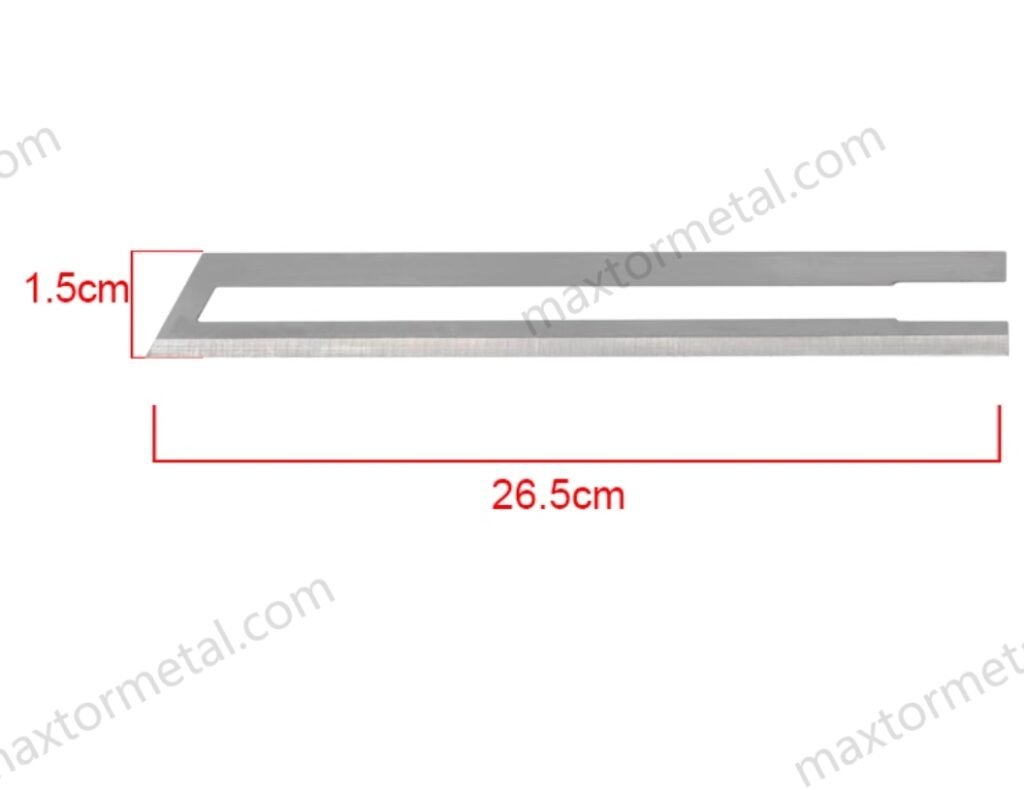
Các biến thể của lưỡi dao
Lưỡi thẳng
Lưỡi dao thẳng phù hợp cho nhiều công việc cắt. Bạn có thể dùng chúng để cắt vải hoặc tạo hình xốp. Chúng dễ sử dụng và rất phù hợp cho người mới bắt đầu. Những lưỡi dao này dễ dàng tạo ra những đường cắt thẳng, sạch sẽ.
Lưỡi Dao Cong
Lưỡi cong phù hợp hơn với các hình dạng và thiết kế phức tạp. Chúng hoạt động tốt khi cắt tròn trên xốp hoặc nhựa. Những lưỡi dao này rất phù hợp cho các dự án sáng tạo đòi hỏi sự tỉ mỉ. Hình dạng cong của chúng giúp xử lý các góc và hoa văn hẹp.
Lưỡi dao chuyên dụng
Lưỡi dao chuyên dụng được thiết kế cho các nhiệm vụ cụ thể. Chúng có nhiều hình dạng và kích cỡ khác nhau cho các dự án độc đáo. Một số lưỡi dao rất phù hợp để cắt cao su dày, trong khi một số khác lại dùng để cắt tấm pin mặt trời. Những lưỡi dao này bền bỉ và chính xác cho những công việc khó khăn.
Tùy chọn nguồn điện
Thông số kỹ thuật điện áp
Lưỡi dao Thermocutter sử dụng điện để làm nóng và hoạt động tốt. Đảm bảo điện áp phù hợp với nhu cầu của lưỡi dao để hoạt động tốt nhất. Hầu hết các lưỡi dao đều hoạt động với 110V đến 240VPhù hợp với các ổ cắm thông dụng trên toàn thế giới. Nhờ đó, chúng dễ dàng sử dụng tại nhà, trong xưởng hoặc tại công trường.
Một số lưỡi dao tiên tiến có thể xử lý hai loại điện áp. Chúng tự động điều chỉnh theo nguồn điện khả dụng, rất hữu ích khi đi du lịch. Nếu bạn đến các quốc gia có hệ thống điện khác nhau, lưỡi dao điện áp kép có thể hoạt động mà không cần bộ chuyển đổi điện áp bổ sung.
Mẹo: Luôn kiểm tra điện áp định mức của lưỡi dao trước khi cắm điện. Sử dụng điện áp không phù hợp có thể làm hỏng lưỡi dao hoặc làm lưỡi dao kém hiệu quả hơn.
Khả năng tương thích với các công cụ
Lưỡi dao Thermocutter phù hợp với nhiều dụng cụ cắt. Bạn có thể sử dụng chúng với dao cắt cầm tay, máy công nghiệp hoặc thiết bị chạy bằng pin. Tính linh hoạt này cho phép bạn xử lý các dự án nhỏ hoặc công việc công nghiệp lớn.
Chọn lưỡi dao phù hợp với công suất và loại kết nối của dụng cụ. Một số dụng cụ cần kích thước hoặc hình dạng lưỡi dao cụ thể để hoạt động tốt. Ví dụ, máy cắt cầm tay nhỏ sử dụng lưỡi dao nhỏ hơn, trong khi máy lớn cần lưỡi dao chắc chắn, chịu lực tốt.
Sau đây là hướng dẫn tương thích đơn giản:
| Loại công cụ | Tính năng tốt nhất của Blade | Ví dụ về trường hợp sử dụng |
|---|---|---|
| Dao nóng cầm tay | Lưỡi dao nhẹ, thẳng hoặc cong | Làm xốp hoặc cắt vải |
| Máy cắt công nghiệp | Lưỡi dao chuyên dụng, chịu lực nặng | Cắt cao su hoặc nhựa dày |
| Thiết bị chạy bằng pin | Lưỡi dao nhỏ gọn, công suất thấp | Nhiệm vụ cắt khi đang di chuyển |
Ghi chú: Luôn đọc kỹ hướng dẫn sử dụng để kiểm tra khả năng tương thích của lưỡi dao. Điều này giúp thiết bị của bạn an toàn và tránh hư hỏng.
Hiểu rõ nhu cầu điện áp và khả năng tương thích của dụng cụ sẽ giúp lưỡi dao cắt nhiệt của bạn bền hơn. Những mẹo này đảm bảo đường cắt sạch sẽ, chuyên nghiệp mọi lúc.
Ứng dụng của lưỡi dao cắt nhiệt
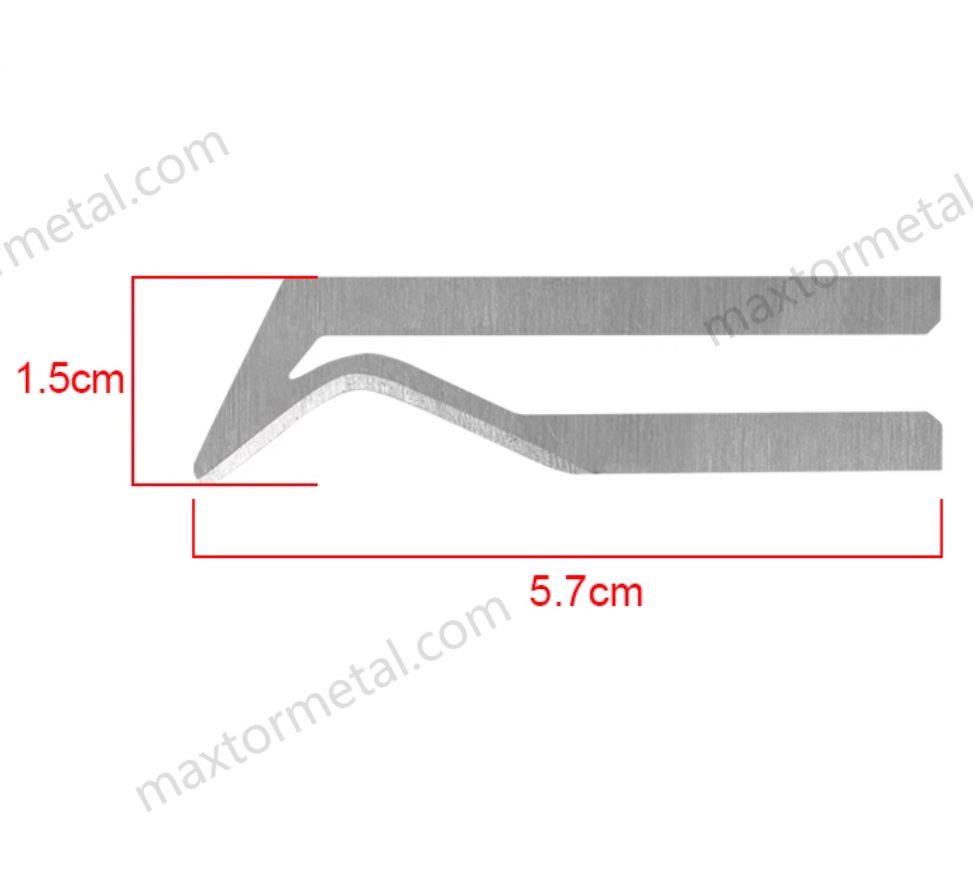
Lưỡi dao Thermocutter là dụng cụ tiện dụng được sử dụng trong nhiều ngành công nghiệp. Chúng cắt và hàn kín các vật liệu tổng hợp một cách chính xác, rất hữu ích. Hãy cùng xem những lưỡi dao này hỗ trợ như thế nào trong các lĩnh vực khác nhau.
Sử dụng công nghiệp
Công nghiệp dệt may
Trong ngành dệt may, lưỡi dao cắt nhiệt rất hiệu quả trong việc cắt vải tổng hợp. Chúng hoạt động trên các chất liệu như polyester và nylon, tạo ra các đường viền sạch sẽ. Lưỡi dao này không bị sờn, giữ cho vải bền và gọn gàng. Ví dụ, chúng được sử dụng để cắt dây đai vải hoặc cắt cuộn vải trong các nhà máy.
Nhiệm vụ đóng gói
Lưỡi dao Thermocutter là chìa khóa cho bao bì tùy chỉnh. Chúng cắt và dán màng nhựa, tấm xốp, v.v. Điều này tạo ra các cạnh mịn, kín, trông gọn gàng và bền chắc. Dù là màng co nhiệt hay miếng xốp, những lưỡi dao này đều mang lại kết quả chuyên nghiệp.
Công việc ô tô
Trong ô tô, lưỡi dao cắt nhiệt có thể cắt vải bọc, gioăng cao su và mút xốp. Chúng tạo ra những đường cắt chính xác cho ghế ngồi và nội thất. Các cạnh được hàn kín giúp vật liệu bền chắc và lâu dài, ngay cả khi sử dụng thường xuyên.
Dự án sáng tạo
Chế tạo bọt
Lưỡi dao Thermocutter rất phù hợp cho việc tạo hình xốp. Dùng chúng để tạo hình xốp cho mô hình, trang phục hoặc đồ trang trí. Nhiệt độ cao cho phép bạn tạo ra các thiết kế chi tiết mà không làm rách xốp. Điều này giúp các dự án sáng tạo trở nên dễ dàng và thú vị hơn.
Dự án bọc ghế
Đối với vải bọc tùy chỉnh, lưỡi dao này cắt vải và mút xốp gọn gàng. Chúng giúp tạo ra các cạnh sắc nét cho đồ nội thất hoặc nội thất ô tô. Bạn có thể tạo ra những thiết kế chi tiết, bóng bẩy và chuyên nghiệp.
Tự làm đồ trang trí nhà
Những người yêu thích DIY (tự làm) rất thích lưỡi dao Thermocutter cho các dự án gia đình. Hãy sử dụng chúng để cắt và dán kín các vật liệu làm rèm cửa, đệm hoặc tranh treo tường. Lưỡi dao này có thể xử lý tốt vải tổng hợp và xốp, mang đến nét cá tính cho ngôi nhà của bạn.
Công dụng chuyên biệt
Thiết bị y tế
Trong y học, lưỡi dao cắt nhiệt cắt và hàn kín vật liệu cho các thiết bị. Chúng định hình lớp đệm xốp hoặc cắt các bộ phận nhựa cho dụng cụ. Độ chính xác của chúng đảm bảo kết quả chất lượng cao cho nhu cầu y tế.
Phụ tùng hàng không vũ trụ
Ngành hàng không vũ trụ sử dụng những lưỡi dao này cho các vật liệu nhẹ. Chúng cắt và hàn kín các loại vải composite hoặc bọt cách nhiệt. Điều này giúp tạo ra các bộ phận bền bỉ và hiệu quả cho máy bay và tàu vũ trụ.
Xây dựng và cách nhiệt
Trong xây dựng, lưỡi cắt nhiệt cắt các vật liệu cách nhiệt như tấm xốp. Chúng tạo ra những đường cắt chính xác cho tường, trần nhà hoặc sàn nhà. Các cạnh được bịt kín giúp chống mài mòn, đảm bảo khả năng cách nhiệt lâu dài.
Mẹo: Luôn chọn lưỡi dao và chế độ nhiệt phù hợp với vật liệu của bạn. Điều này giúp bạn luôn đạt được kết quả tốt nhất.
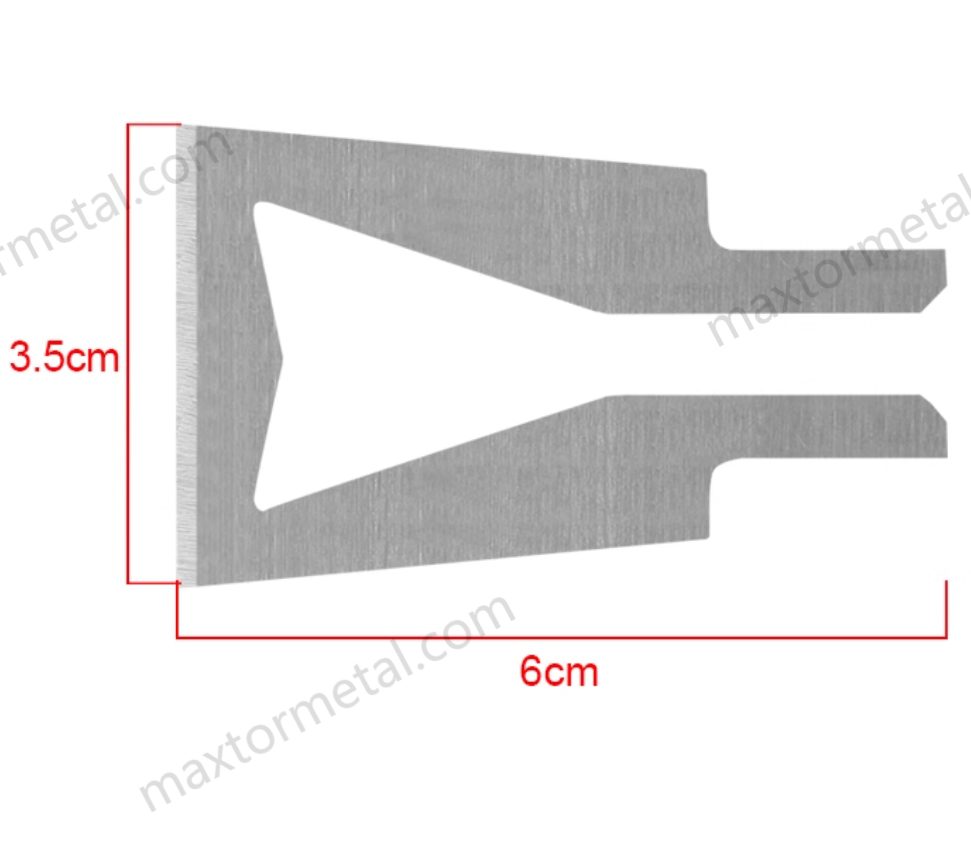
Lợi ích của lưỡi dao Thermocutter
Các cạnh chính xác và sạch sẽ
Lưỡi dao Thermocutter cắt vật liệu tổng hợp với độ chính xác cao. Lưỡi dao được làm nóng sẽ làm tan chảy vật liệu, tạo ra các cạnh mịn mà không bị rách. Điều này rất quan trọng cho các dự án cần độ hoàn thiện tinh xảo, chẳng hạn như vật liệu cách nhiệt bằng xốp hoặc cắt vải. Dù là nội thất ô tô hay đồ thủ công gia dụng, những cạnh cắt gọn gàng này sẽ giúp sản phẩm của bạn trông đẹp hơn và bền hơn.
Cắt và niêm phong cùng một lúc
Lưỡi dao Thermocutter có thể cắt và hàn kín chỉ trong một bước. Khi lưỡi dao tan chảy qua vật liệu, chúng cũng hàn kín các cạnh. Điều này giúp tiết kiệm thời gian vì không cần hàn kín thêm. Ví dụ, các cạnh dây được hàn kín sẽ không bị bung ra và luôn chắc chắn. Tính năng này rất hữu ích trong việc đóng gói, nơi các cạnh được hàn kín giúp giữ sản phẩm an toàn.
Tiết kiệm thời gian và giảm thiểu lãng phí
Lưỡi dao Thermocutter hiệu quả và ít hao phí vật liệu. Lưỡi dao thông thường để lại cạnh thô ráp hoặc cần thêm lần cắt, gây lãng phí tài nguyên. Lưỡi dao này cắt hoàn hảo ngay lần đầu tiên, giảm thiểu sai sót. Chúng hữu ích trong nhiều ngành công nghiệp, chẳng hạn như sản xuất ô tô, cắt xốp và điện. Dưới đây là bảng minh họa công dụng của chúng:
| Khu vực ứng dụng | Sự miêu tả |
|---|---|
| Thương mại lốp xe và ô tô | Cắt và tạo hình vật liệu lốp xe. |
| Các nhà sản xuất khuôn đúc | Giúp cắt chính xác trong sản xuất. |
| Lắp đặt điện | Tước dây và loại bỏ chất kết dính. |
| Cắt bọt | Cắt bọt dễ dàng và gọn gàng. |
| Niêm phong vải tổng hợp | Làm kín các cạnh của vật liệu tổng hợp. |
| Loại bỏ lớp phủ cao su | Loại bỏ lớp phủ cao su hiệu quả. |
| Bảng chuyển mạch và phân phối | Được sử dụng trong công việc lắp ráp điện. |
| Tước dây | Tách lớp cách điện khỏi dây điện. |
| Loại bỏ chất kết dính | Loại bỏ chất kết dính trên bề mặt. |
| Cắt vật liệu tổng hợp | Cắt sạch nhiều loại vải tổng hợp. |
Bằng cách tiết kiệm thời gian và giảm thiểu lãng phí, lưỡi dao cắt nhiệt giúp bạn làm việc nhanh hơn và thông minh hơn.
Tính linh hoạt trong nhiều ngành công nghiệp
Lưỡi dao Thermocutter hữu ích trong nhiều ngành công nghiệp. Chúng thích ứng tốt với nhiều nhiệm vụ khác nhau, giúp công việc trở nên dễ dàng và hiệu quả hơn.
1. Sản xuất và chế tạo
Lưỡi dao Thermocutter hỗ trợ cắt chính xác trong nhà máy. Chúng cắt vải tổng hợp, nhựa và xốp cho ghế ô tô, bao bì và vật liệu cách nhiệt. Ví dụ, chúng tạo ra những đường cắt gọn gàng, vừa vặn hoàn hảo cho vải bọc ghế ô tô. Các cạnh được hàn kín cũng giúp sản phẩm chắc chắn hơn và bền hơn.
2. Các lĩnh vực sáng tạo và nghệ thuật
Những lưỡi dao này rất phù hợp cho các dự án thủ công và thiết kế. Bạn có thể dùng chúng để tạo hình xốp cho trang phục, đồ trang trí hoặc mô hình. Chúng cũng có thể cắt vải tổng hợp để trang trí nhà cửa tự làm hoặc bọc ghế theo yêu cầu. Khả năng hàn nhiệt giúp các cạnh được dán kín, mang lại cho tác phẩm của bạn vẻ ngoài gọn gàng và chuyên nghiệp.
3. Xây dựng và cách nhiệt
Trong xây dựng, lưỡi cắt nhiệt cắt các tấm xốp để cách nhiệt. Chúng tạo ra hình dạng chính xác cho tường, sàn hoặc trần nhà. Các cạnh được bịt kín giúp ngăn ngừa hư hỏng, giữ cho lớp cách nhiệt chắc chắn và bền lâu hơn. Điều này giúp công việc xây dựng nhanh hơn và đáng tin cậy hơn.
Mẹo: Chọn lưỡi dao phù hợp với vật liệu và công việc của bạn. Điều này giúp bạn đạt được kết quả tốt hơn và giữ cho dụng cụ của bạn hoạt động lâu hơn.
Lưỡi dao Thermocutter rất đa năng. Chúng có thể cắt và hàn kín các vật liệu tổng hợp, hữu ích cho nhiều công việc. Dù bạn là người chuyên nghiệp hay người mới bắt đầu, những dụng cụ này đều giúp nâng cao chất lượng công việc của bạn.
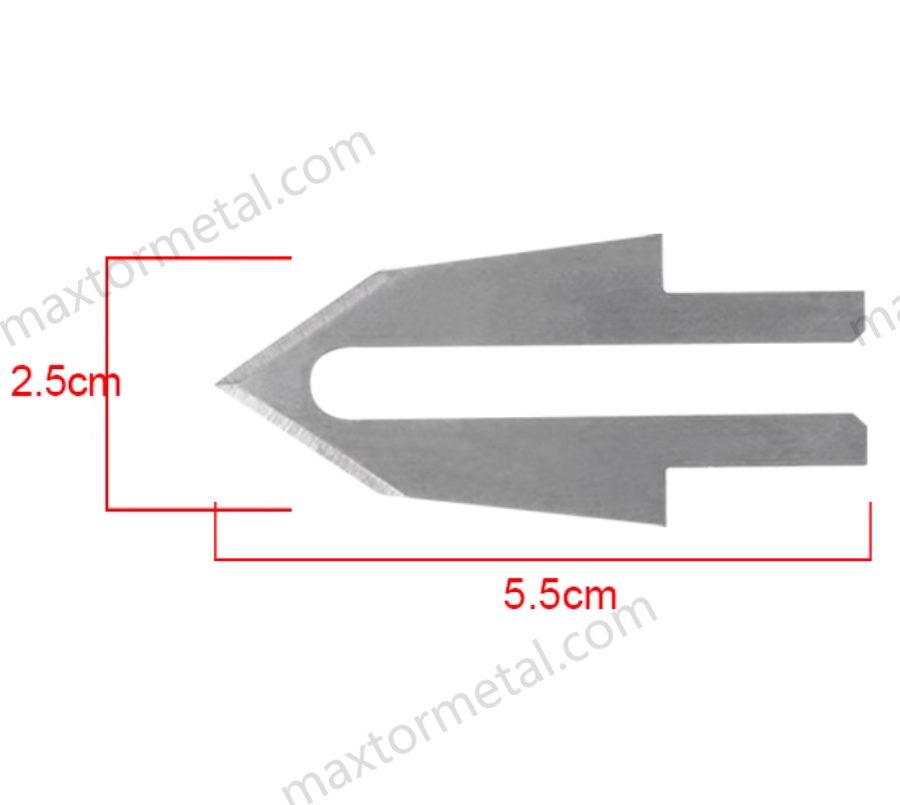
Lưỡi dao Thermocutter tùy chỉnh của Nanjing Metal
Tại sao tùy chỉnh lại quan trọng
Mỗi dự án đều khác nhau và cần những dụng cụ riêng. Lưỡi dao tiêu chuẩn có thể không phải lúc nào cũng hiệu quả. Lưỡi dao cắt nhiệt tùy chỉnh được thiết kế để đáp ứng chính xác nhu cầu của bạn. Điều này giúp bạn có được những đường cắt chính xác, đường hàn mịn và kết quả tốt hơn. Cho dù bạn làm việc trong ngành ô tô, đóng gói hay thủ công, lưỡi dao tùy chỉnh sẽ cải thiện hiệu suất công việc và tiết kiệm thời gian.
Lưỡi dao tùy chỉnh cũng giúp giảm thiểu lãng phí. Một lưỡi dao được thiết kế riêng cho công việc của bạn sẽ giảm thiểu sai sót và mang lại kết quả ổn định. Đối với các công việc đòi hỏi độ chính xác cao, chẳng hạn như chế tạo dụng cụ y tế hoặc phụ tùng máy bay, lưỡi dao tùy chỉnh rất quan trọng.
Giải pháp phù hợp cho các ứng dụng cụ thể
Nanjing Metal sản xuất lưỡi dao cắt nhiệt tùy chỉnh cho nhiều ngành công nghiệp. Đội ngũ của họ hỗ trợ bạn từ khâu thiết kế đến thử nghiệm. Họ thậm chí có thể tạo lưỡi dao dựa trên mẫu hoặc bản vẽ của bạn. Điều này đảm bảo lưỡi dao phù hợp hoàn hảo với nhu cầu của bạn.
Sau đây là một số tùy chọn tùy chỉnh mà họ cung cấp:
- Thiết kế tùy chỉnh: Lưỡi dao được thiết kế cho các nhiệm vụ cắt và niêm phong đặc biệt của bạn.
- Độ chính xác kích thước: Nguyên mẫu chính xác và sản phẩm cuối cùng với số đo chặt chẽ.
- Chuyên môn về vật liệu: Lựa chọn vật liệu tốt nhất về độ bền và hiệu suất.
Cho dù bạn cần lưỡi dao cho bọt, vải tổng hợp hay cao su, Nanjing Metal đều có giải pháp phù hợp dành cho bạn.
Chuyên môn của Nanjing Metal về lưỡi dao tùy chỉnh chất lượng cao
Với 18 năm kinh nghiệm, Nanjing Metal Industrial CO., Limited là một thương hiệu uy tín trong lĩnh vực sản xuất lưỡi dao. Họ có tay nghề cao trong việc lựa chọn vật liệu, xử lý nhiệt và kiểm tra chất lượng để tạo ra những lưỡi dao chất lượng cao.
| Diện mạo | Chi tiết |
|---|---|
| Lựa chọn vật liệu | Chuyên gia về thép cacbon, thép dụng cụ, cacbua vonfram và nhiều loại khác. |
| Quy trình xử lý nhiệt | Xử lý nhiệt tiên tiến cho lưỡi dao chắc chắn và linh hoạt. |
| Các biện pháp kiểm soát chất lượng | Kiểm tra cẩn thận trong quá trình sản xuất để đảm bảo chất lượng cao nhất. |
| Sản xuất theo yêu cầu | Sản xuất lưỡi dao chính xác theo nhu cầu của khách hàng. |
Họ cũng hỗ trợ thiết kế và thử nghiệm để đảm bảo lưỡi dao của bạn hoàn hảo. Nếu bạn muốn có lưỡi dao cắt nhiệt chất lượng cao, Liên Hệ Đội Nam Kinh Metal ngày hôm nay.
Mẹo chọn lưỡi dao Thermocutter phù hợp
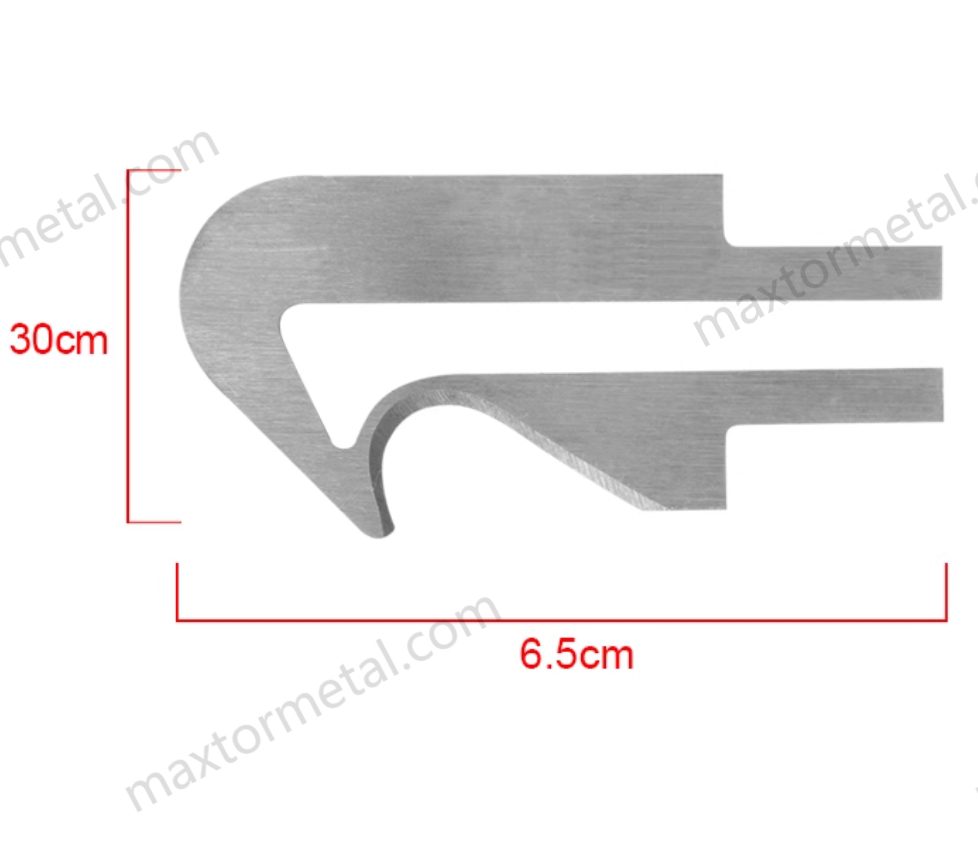
Những điều cần suy nghĩ (Chất liệu, Độ dày, Cách sử dụng)
Việc chọn lưỡi dao cắt nhiệt phù hợp bắt đầu bằng việc hiểu rõ vật liệu của bạn. Các vật liệu khác nhau như xốp, nhựa hoặc vải cần lưỡi dao riêng. Ví dụ, xốp mỏng cần ít nhiệt hơn, nhưng nhựa dày cần lưỡi dao chắc hơn.
Độ dày của vật liệu cũng rất quan trọng. Lưỡi dao mỏng phù hợp cho những đường cắt nhỏ, tinh tế. Vật liệu dày hơn cần lưỡi dao cứng hơn để cắt gọn gàng. Luôn điều chỉnh nhiệt độ lưỡi dao phù hợp với điểm nóng chảy của vật liệu. Sử dụng lưỡi dao không phù hợp có thể làm hỏng dự án của bạn hoặc tạo ra những đường cắt không đẹp mắt.
Tiếp theo, hãy nghĩ về những gì bạn đang làm. Bạn đang làm đồ thủ công, làm những công việc lớn, hay làm những nhiệm vụ đặc biệt? Mỗi công việc cần một loại lưỡi dao nhất định. Lưỡi cong phù hợp cho các thiết kế chi tiết. Lưỡi thẳng phù hợp hơn cho những đường cắt thẳng và gọn gàng.
Mẹo: Ghi lại những vật liệu bạn sử dụng thường xuyên nhất. Điều này giúp bạn chọn đúng lưỡi dao nhanh hơn cho từng dự án.
Chọn lưỡi dao phù hợp cho công việc
Lưỡi dao bạn chọn nên phù hợp với công việc. Lưỡi thẳng thích hợp cho việc cắt thông thường, chẳng hạn như cắt xốp hoặc vải. Lưỡi cong phù hợp nhất cho công việc chi tiết, chẳng hạn như tạo hình xốp cho đồ thủ công. Lưỡi chuyên dụng được thiết kế cho các công việc khó khăn, chẳng hạn như cắt cao su hoặc tấm pin mặt trời.
Sau đây là hướng dẫn đơn giản:
| Loại lưỡi dao | Tốt nhất cho | Nhiệm vụ ví dụ |
|---|---|---|
| Lưỡi thẳng | Cắt hàng ngày | Cắt tỉa mép vải |
| Lưỡi Dao Cong | Thiết kế chi tiết | Xốp định hình dùng cho đồ thủ công |
| Lưỡi dao chuyên dụng | Nhiệm vụ công nghiệp đặc biệt | Cắt cao su dày |
Sử dụng lưỡi dao phù hợp cho công việc sẽ mang lại cho bạn kết quả gọn gàng và chuyên nghiệp.
Hãy nhờ chuyên gia giúp đỡ
Nếu bạn không chắc chắn, hãy hỏi chuyên gia. Họ có thể giúp bạn chọn lưỡi dao phù hợp nhất với vật liệu, độ dày và công việc của bạn. Chuyên gia cũng có thể đề xuất lưỡi dao tùy chỉnh cho các dự án đặc biệt.
Hãy liên hệ với các công ty như Nanjing Metal. Đội ngũ của họ có thể tư vấn và sản xuất lưỡi dao theo yêu cầu của bạn.
Ghi chú: Đừng ngại đặt câu hỏi. Nhận lời khuyên có thể giúp bạn tiết kiệm thời gian và làm việc tốt hơn.
Lưỡi dao Thermocutter giúp việc cắt và hàn kín dễ dàng và nhanh chóng hơn. Chúng được sử dụng trong nhiều ngành công nghiệp, chẳng hạn như dệt may và xây dựng, để mang lại kết quả hoàn hảo. Việc chọn đúng lưỡi dao sẽ cải thiện chất lượng công việc và giảm thiểu lãng phí. Lưỡi dao tùy chỉnh từ Nanjing Metal được sản xuất theo nhu cầu cụ thể của bạn. Với 18 năm kinh nghiệm, đội ngũ của chúng tôi tạo ra những lưỡi dao chắc chắn, đáng tin cậy dành riêng cho bạn.
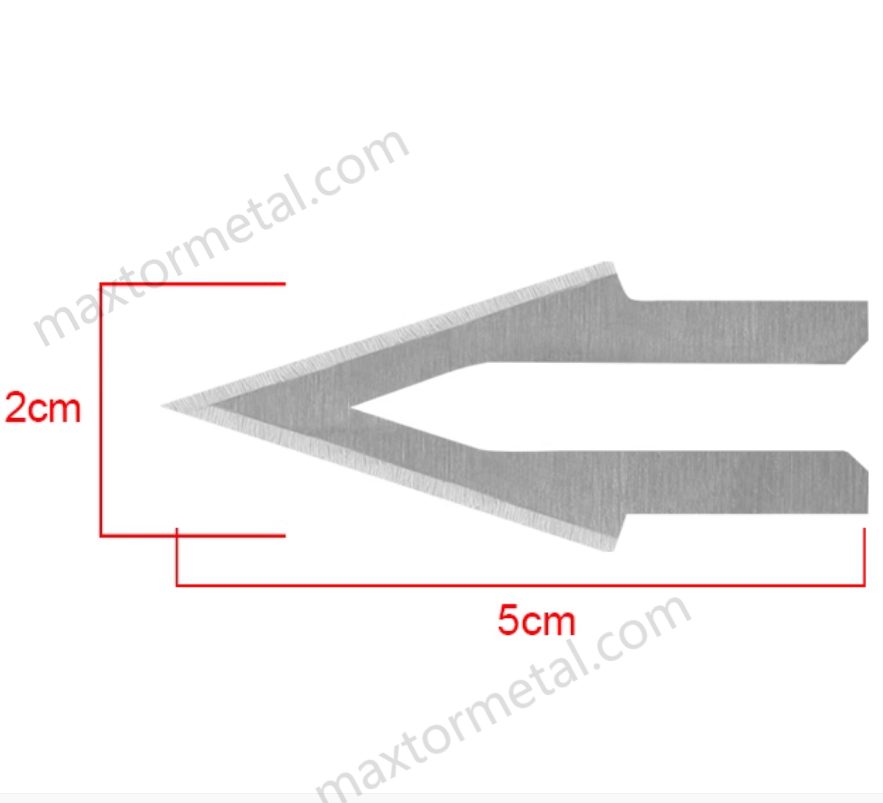
Câu hỏi thường gặp
Lưỡi dao cắt nhiệt có thể cắt được những vật liệu nào?
Lưỡi dao Thermocutter cắt các vật liệu tổng hợp như xốp, nhựa, nylon và polyester. Chúng hoạt động tốt nhất trên các vật liệu nóng chảy khi gặp nhiệt. Những lưỡi dao này rất phù hợp cho các công việc thủ công, đóng gói và công nghiệp.
Lưỡi dao cắt nhiệt làm sao để không bị sờn?
Lưỡi dao nóng lên và làm tan chảy vật liệu trong quá trình cắt. Nhờ đó, các cạnh được hàn kín ngay lập tức, ngăn ngừa tình trạng sờn hoặc bung chỉ. Bạn sẽ có được những cạnh sắc nét, mịn màng mà không cần tốn nhiều công sức.
Lưỡi dao cắt nhiệt có an toàn khi sử dụng không?
Có, chúng an toàn nếu sử dụng đúng cách. Nhiều lưỡi dao có bộ điều khiển nhiệt và tính năng an toàn để tránh quá nhiệt. Luôn làm theo hướng dẫn và mặc đồ bảo hộ.
Lưỡi dao cắt nhiệt có thể được sử dụng cho các dự án sáng tạo không?
Có chứ! Những lưỡi dao này rất tuyệt vời để tạo hình xốp, cắt vải tổng hợp và tạo ra các thiết kế chi tiết. Chúng được ưa chuộng cho các dự án thủ công DIY, trang phục và trang trí nhà cửa.
Làm thế nào để chọn lưỡi dao cắt nhiệt phù hợp?
Chọn lưỡi dao dựa trên vật liệu và công việc của bạn. Lưỡi thẳng dùng cho các đường cắt đơn giản, lưỡi cong dùng cho các hình dạng chi tiết, và lưỡi chuyên dụng dùng cho vật liệu cứng. Nếu không chắc chắn, hãy nhờ chuyên gia hỗ trợ.
Mẹo: Kiểm tra lưỡi dao trên một mảnh vật liệu nhỏ trước khi bắt đầu dự án.
Xem thêm
Dao cắt nóng: Cách thông minh hơn để cắt sạch, nhanh và tiết kiệm chi phí


